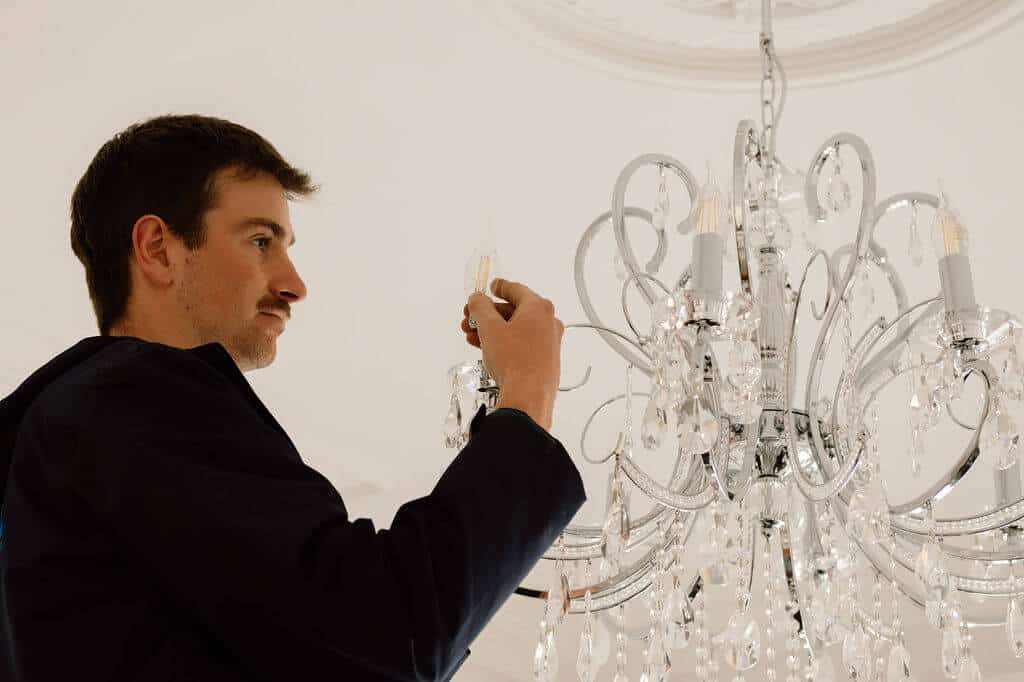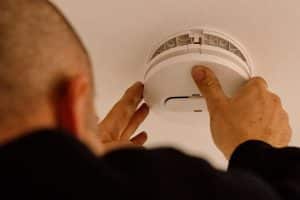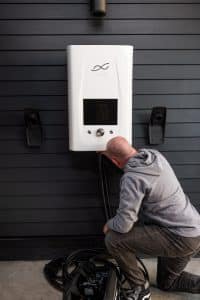We live in an era where we’re all trying to work out to how to reduce electrical consumption. On a purely personal level it’s about keeping our household expenses as low as possible in challenging economic times. More broadly, various world events are impacting the cost and supply of electricity and the materials required to generate it.
It’s also become critical that we move away from our heavy reliance on electricity to preserve our environment, and hopefully mitigate some of the damage already caused.
So let’s dive in and discuss the ways you can reduce electrical consumption at home.
Fixed and variable electricity bill charges
Your electrical bill typically contains two types of costs: fixed and variable. They’ll usually be listed separately so that they’re easy to see.
The fixed cost is a flat daily fee that you pay for your house to be connected to the electrical grid. Depending on your supplier, it will usually appear as a “service to property” or “daily supply” charge.
The variable cost is what you pay for your actual electricity consumption in any given month. It is listed as a “usage” or “consumption” charge on your bill. These costs will vary, not only due to your electricity usage, but also because Australian electricity retailers offer “time of use” plans: peak time, off-peak time and shoulder time. Charges are different for each.
Structural factors that influence electrical consumption at home
Before we discuss concrete ways to reduce electrical consumption at home, we need to take a quick look at the local conditions of your property that also impact the amount of electricity that you use.
To be fair, there isn’t much you can do to change these structural conditions if you already own your home and don’t intend to change its design. However, bear them in mind if you’re in the market to buy or rent a home.
These factors can have a significant impact on your electricity consumption.
- The size of the house.
- The type of house: freestanding, a townhouse or an apartment.
- The orientation of the house design relative to the sun, so that it can use passive heating or cooling.
- The number, size and energy efficiency of structurally installed appliances like hot water geysers or swimming pool pumps.
Electricity consumption hot spots in your house
To find ways to reduce electricity consumption at home, start by identifying the areas that draw the most power in your house. Heating and cooling are the single major sources of electrical consumption. The four main impact points are warming or cooling your home, using hot water, maintaining swimming pools or Jacuzzis, and running your fridge.
Ensuring that these systems run optimally can go a long way to reduce electrical consumption at home. Start by looking for simple and low-cost ways of making changes to them. For instance, you could replace your electrical water system with one that uses solar power. A geyser connected to a single solar panel on your roof can make a very significant difference.
Replacing your existing domestic appliances with more energy-efficient ones is another excellent way of reducing electrical consumption. You can compare the energy demands of different types of appliances on the Australian government’s Energy Rating website, as per the national Equipment Energy Efficiency programme.
Remember to always use a certified electrician to make sure that the equipment is correctly placed and installed.
Immediate ways to reduce electricity consumption at home
There are plenty of things you can do immediately to reduce electricity consumption at home. You’ll not only notice the savings on your electricity bill – you’ll also be doing your much-needed part for the environment.
Only switch on lights when you need them
We waste a lot of electricity by having too many lights on in our homes. It’s all too easy to move from one room to another while keeping all the lights on. As a rule of thumb, if you’re not using a room, switch off the light.
Turn off appliances at the power points
Many appliances still draw power when they’re ostensibly switched off, but are actually in standby mode. This still uses electricity, so switch appliances off at their plug sockets to prevent it.
Use energy-saving lightbulbs
Not only do these bulbs require less electricity to operate than traditional ones; they also last longer, so you won’t have to buy them as often. By swapping all your traditional lightbulbs for these LED globes, you can save up to 80% of the electricity required to light your home.
Control your central heating
If you have central heating, your electricity bill can increase by as much as 30% in winter. Rather than leaving it on a single setting, monitor your daily needs according to the weather. The government’s Energy Environment and Climate Action wing recommends varying your thermostat between 18 – 20 Celsius, as a general guide.
Using electricity in your kitchen more efficiently
Rather than cooking food from frozen, you can save electricity by thawing it first. If you have a microwave, use it whenever you can, as it draws much less power than an electric stove. You can also cook larger quantities at a time and store the food in your freezer, as reheating uses less energy. Your fridge is another big energy consumer, so make sure that your door seals are tight and keep the temperature around 5 degrees Celsius.
Save electricity when washing clothes
This is a great way to reduce electrical consumption at home. Make sure that you always wash full loads rather than partial ones, and use cold water. Avoid clothes dryers, as they consume a lot of power to generate heat. If the weather doesn’t allow you to hang clothes outside, you can use a fan indoors.
Consider installing roof insulation
Ceiling insulation can also help lower electricity consumption. It serves to retain heat when it’s cold and provides cooling on hot days. Sustainability Victoria estimates that this can reduce electricity consumption at home by up to 45% each year
Don’t forget your curtains and doors
The smaller the area that needs to be heated, the less power is required. Close intervening doors to rooms that you’re not using, to prevent heat from escaping from where you are. If you have large windows, draw the curtains in winter and open them in summer, as glass rapidly conducts warmth from inside to outside and vice versa.
Consult experts on ways to reduce electrical consumption at home
These tips are easy to implement yourself, but you can find even more ways to reduce electricity consumption at home by consulting certified Melbourne electricians who specialise in home energy reduction. Call STL Electrical and we’ll inspect your home, give you a list of recommendations, and implement them for you where necessary.




